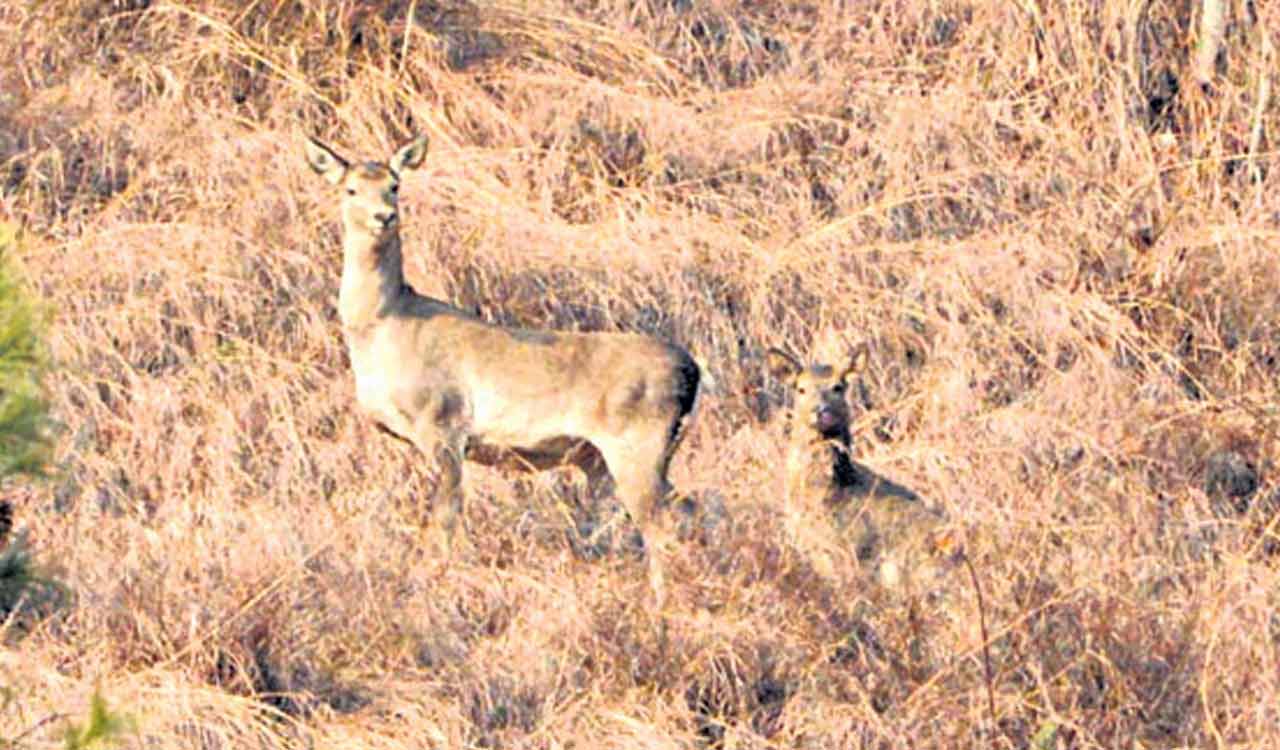The Hangul deer (hangul Cervus hanglu hanglu) is categorised as ‘Critically Endangered’ on the IUCN Red List and as a Schedule 1 species in the Indian Wildlife (Protection) Act, 1972.
Published Date – 11:01 PM, Fri – 15 December 23

Hangul deer, the critically endangered iconic species of Kashmir Himalayas.
Hyderabad: For the first time in India, geneticists from the Hyderabad-based Centre for Cellular and Molecular Biology (CCMB) have utilised genetic data to estimate the population of the Hangul deer, the critically endangered iconic species of Kashmir Himalayas, which faces imminent threat of population loss and extinction.
Once widely distributed across Kashmir, the Chenab Valley of Jammu and Himachal Pradesh, the Hangul deer (hangul Cervus hanglu hanglu) is categorised as ‘Critically Endangered’ on the IUCN Red List and as a Schedule 1 species in the Indian Wildlife (Protection) Act, 1972.
The CCMB study, published in Cambridge Core — the journal of Cambridge University Press — on December 13, 2023, was led by senior principal scientist Dr P Anuradha Reddy. The researchers utilised non-invasive genetics to understand the population status of Hanglu at the Dachigam National Park, Jammu and Kashmir, which contains its last sizeable population.
In the early 1900s, there were 3,000-5,000 Hangul and over the years, due to a variety of reasons (including hunting), their numbers in the wild are now estimated to be close to 200 individuals with skewed sex ratio of just 12-15 males for every 100 females.
Using 14 microsatellite markers, the CCMB team identified 293 individuals (208 females and 85 males) through faecal analysis and generated data on the genetic status and population size of Hangul in its winter habitat. The detection of males was the highest in November, coinciding with the breeding season, whereas the detection of females was the highest in December.
“Our estimate of the Hangul population using genetic mark-recapture with bootstrapping was 394 individuals,” the CCMB said.
Hangul is a seasonal migrant, moving between lower and higher elevations in winter and summer, respectively. Throwing some light on the breeding patterns, the CCMB researchers said it is a seasonal breeder, with a few observational and anecdotal records suggesting that males rut during September-November, when they guard large female harems and break away from groups immediately after the mating season.
The study will guide future studies of the subspecies and also serve as an impetus to identify founder animals for captive breeding to ensure the long-term survival of the Hangul deer.




